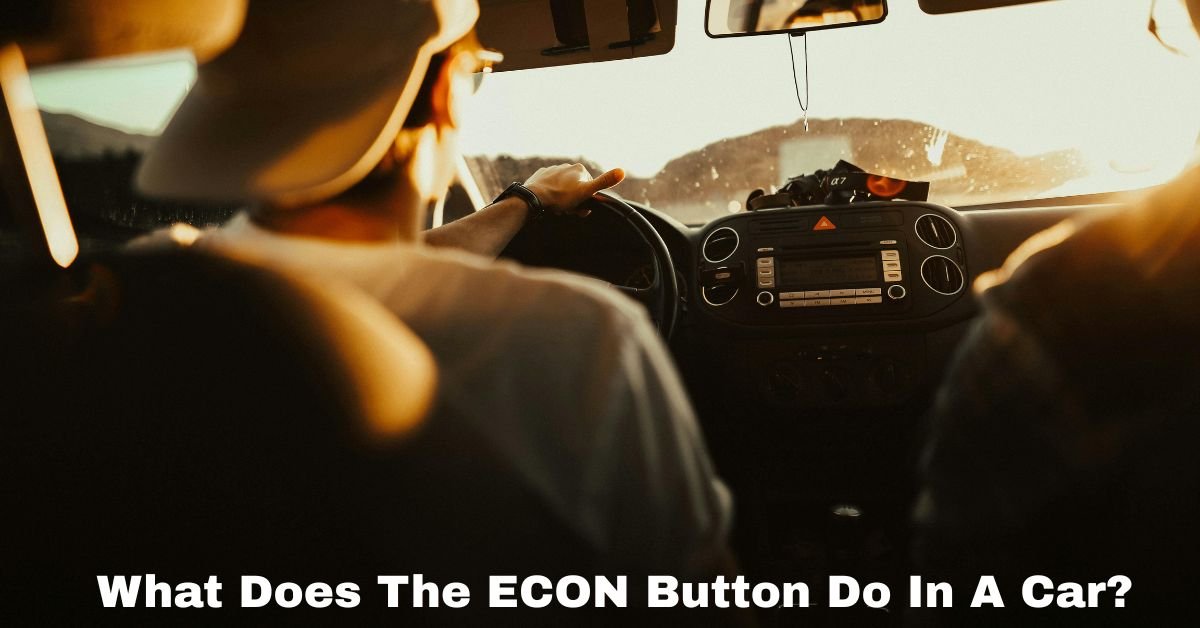If you’ve ever glanced at your car’s dashboard and noticed a button labeled “ECON,” you’re not alone in wondering what it actually does. It’s one of those features that’s easy to overlook—until gas prices rise or you start thinking more about fuel efficiency. So what’s the deal with the ECON button, and should you be using it?
Let’s break it down.
What Does the ECON Button Do in a Car? A Simple Guide for Everyday Drivers
What Is the ECON Button?
The ECON button, short for “Economy,” is a feature found in many modern vehicles—particularly from brands like Honda, Toyota, and Nissan. When activated, the ECON mode adjusts several systems in your car to help improve fuel efficiency. It’s essentially telling your car to be more eco-conscious, trading off a bit of performance for savings at the pump.
But how exactly does it do that?
How ECON Mode Works
When you press the ECON button, your car begins to optimize various components to use less fuel. Here are some of the key systems it affects:
1. Throttle Response
In ECON mode, your car will slightly dull the throttle response. In simpler terms, when you press the gas pedal, the car won’t accelerate as quickly as it would in normal mode. This helps prevent unnecessary fuel burn from rapid acceleration, which is one of the biggest fuel wasters.
2. Air Conditioning (A/C)
The air conditioning system gets dialed back in ECON mode. It won’t completely turn off, but it will work less aggressively to conserve energy. You might notice that the cabin cools down a little more slowly or that the compressor cycles less frequently. That’s all part of the efficiency strategy.
3. Transmission Shift Points
In automatic cars, ECON mode can adjust the timing of gear shifts. It will try to keep the engine operating at lower RPMs by shifting earlier, reducing fuel consumption. While this might make the car feel a bit “sluggish,” it’s doing its job by saving gas.
Must Read: What Does Bad Gas Do To A Car?

4. Cruise Control Adjustments
In some models, ECON mode will even modify how cruise control works, aiming for smoother acceleration and braking to reduce fuel usage.
When Should You Use the ECON Button?
You can technically leave the ECON mode on all the time, especially if fuel efficiency is your top priority. However, there are certain situations where it’s particularly useful—and some where you might want to switch it off.
Ideal Times to Use ECON Mode:
- City driving: Stop-and-go traffic is where ECON mode really shines, as it limits rapid acceleration and helps conserve fuel.
- Mild weather: Since it adjusts the A/C, it’s best used when you don’t need maximum cooling or heating.
- Non-aggressive driving: If you’re just cruising casually and not in a hurry, turn it on!
When to Avoid ECON Mode:
- Highway driving: While it still helps on the highway, the benefits are less noticeable.
- Towing or hauling: You’ll want full engine power for that.
- Extreme temperatures: You might need your A/C or heater working at full blast.
- Merging or climbing hills: That reduced throttle response can make acceleration feel sluggish, so you may prefer turning it off temporarily.
Does It Actually Save Gas?
Yes—though the savings might not be dramatic. Depending on your car and driving habits, you might save anywhere from 1–3 miles per gallon. Over time, that can add up, especially if you drive a lot or spend a lot on fuel. Think of it as part of a larger strategy to drive more efficiently, rather than a magic button that cuts your fuel costs in half.
Final Thoughts
The ECON button is one of those small car features that offers a lot of bang for your buck—literally. It’s designed for everyday situations and drivers who want to stretch their gas tanks a little further. While it’s not ideal for every driving scenario, it’s a great tool for more mindful driving.
So next time you get in your car and see that little green leaf or “ECON” light, give it a press. Your wallet—and the planet—might just thank you.
